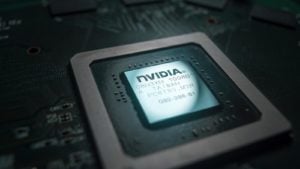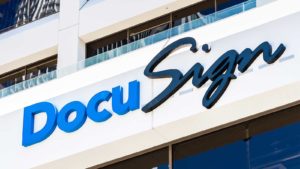There is a lot of chatter on Wall Street right now about how tech stocks may be in a bubble, with many comparing the current surge in tech stocks to the dot-com bubble of 1999-2000.
Broadly, I don’t think this chatter is warranted.
We aren’t in a tech stock bubble, for two big reasons:
1. Unprecedented pace of technology disruption. Thanks to the novel coronavirus converging on multiple technological breakthroughs like 5G, artificial intelligence and cloud computing, we are presently in the midst of technology disrupting our daily lives at an unprecedented pace.
This disruption won’t end anytime soon. If anything, it will only accelerate, as over the next five to 10 years, we binge-watch more streaming TV, migrate to hybrid work environments built on cloud computing and virtualization, adopt more smart devices with lightning-fast 5G connectivity and push into an era of semi-autonomous and fully autonomous cars. By the end of the decade, technology will influence and likely dominate every aspect of personal and professional lives.
2. Record low rates. In response to Covid-19, central banks across the globe cut interest rates to zero. Against that backdrop, investors are rushing into financial assets that will deliver them returns that at least beat inflation. The best option, of course, is stocks. And the best option in the stock market are tech stocks, thanks to the reasons outlined above. Thus, so long as rates remain next to zero, investor demand for tech stocks will remain robust.
Overall, then, I do not think we are in a tech stock bubble.
But there are some tech stocks out there that are caught in a bubble. You should avoid those specific names — not the entire sector.
With that in mind, let’s take a look at five techs stocks that appear to be caught in a bubble today:
- Zoom (NASDAQ:ZM)
- Spotify (NYSE:SPOT)
- Nvidia (NASDAQ:NVDA)
- DocuSign (NASDAQ:DOCU)
- Twitter (NYSE:TWTR)
Tech Stocks in a Bubble: Zoom (ZM)

First up on this list of hot tech stocks in a bubble is video conferencing software giant Zoom.
I understand and fully believe in the bull thesis here. Thanks to Covid-19, the old days of office work are over. Hybrid work is the future of work. In a world dominated by hybrid work, video conferencing software becomes necessary and ubiquitous.
Zoom is the No. 1 provider of video conferencing software in the world. As such, the company’s software has a reasonably good opportunity to be incorporated into most businesses and offices across the globe one day.
But the painful reality is that all of that (and then some) is priced into ZM stock today.
There are only 3 million businesses with 10 or more employees in Zoom’s core addressable markets of America, Canada, Europe and Oceania. It is very likely that, by 2030, nearly all 3 million of them have some form of video conferencing software. But Zoom won’t have 3 million customers. This is a highly competitive market with RingCentral (NYSE:RNG), Microsoft (NASDAQ:MSFT) Teams and many more.
In that competitive setting, Zoom should be able to leverage its best-in-market video quality to nab 30% market share, or about 1 million customers. Assuming average revenue climbs toward $15,000 per year (from $9,000 per year in 2019) and that operating margins rise all the way to 45%-plus, my modeling suggests that at best, Zoom does about $15 in earnings per share by 2030 (consensus estimates sit at $13 for 2030).
Application software stocks historically fetch an average forward earnings multiple of 35x. A 35x multiple on $15 in 2030 EPS implies a 2029 price target for ZM stock of $525. Discounted back by 8.5% per year, that implies a 2020 price target of $250, which is miles below the ZM stock price today.
When will the bubble pop?
Probably soon. As employees return to offices, and demand for Zoom’s video software cools off. That cooling off coupled with today’s extreme valuation could spell big trouble for ZM stock.
Spotify (SPOT)

Next up on this list of tech stocks caught in a bubble is music streaming giant Spotify.
As with Zoom, I fully understand and believe the bull thesis. The entire world is pivoting to on-demand, paid music streaming services. Spotify is the king of that industry, and management is doing everything right today — including building out a portfolio of original podcast content — to create a sticky ecosystem and sustain market dominance for years to come.
At scale, the company will be able to nab hundreds of millions of subs, while such huge scale will drive big profit margin expansion and enable the company to report enormous profits.
But, again, all of this is priced into SPOT stock already.
My long-term model on Spotify makes some aggressive assumptions, including:
- Spotify continues to add 25 million new premium subs per year, growing to over 500 million subs by 2030 (versus 138 million today).
- Average revenue per user declines moderately as user growth slows, and ultimately pans out around $6 by 2030 (versus roughly $5 today).
- The ad business scales at a similar pace as the premium subscriber business.
- Gross margins improve with economies of scale to 27.5%.
- Sustained robust revenue growth drives positive operating leverage, and pushes the opex rate down from what will likely be 30% this year, to sub-20% by 2030.
- Earnings per share roar from huge net losses today, to $13 by 2030.
Based on a typical application software stock multiple of 35 times forward earnings and an 8.5% annual discount rate, $13 in 2030 earnings per share implies a 2020 price target for Spotify stock of less than $220 — well below where SPOT stock trades today.
When will the bubble pop?
Much like Zoom, I think soon. Sub growth trends will moderate as consumer behavior normalizes over the next few months. This slowdown will converge on today’s extended valuation to create material weakness in shares.
Tech Stocks in a Bubble: Nvidia (NVDA)

It is really tough to write this list of tech stocks in a bubble because all of them are great companies.
Nvidia perhaps more so than all the others.
This company has a created a class of next-generation GPUs which together represent the foundation upon which all of tomorrow’s most important technologies will be built, like self-driving cars, AI, automation, cloud computing, AR/VR, you name it. To that end, this company is the best-in-breed “picks and shovels” supplier of all of tomorrow’s biggest markets — a position which guarantees the company robust demand, revenue and profit growth over the next five to 10 years.
But with a $320 billion market capitalization on 2020 projected sales of $16 billion, Nvidia stock is overvalued.
The multiples are insanely stretched: 25 times trailing sales, 100 times trailing earnings, 60 times trailing cash flow, 23 times book value. Those are multiples you never see in the cyclical, capex-heavy semiconductor industry.
The comps don’t add up. Nvidia is being valued at 50% premium to Intel (NASDAQ:INTC), yet Intel has 500%-plus more sales.
Most importantly, the long-term growth prospects don’t support current prices. Earnings this year are expected to come in around $9 per share. In a best-case scenario, I see that number hitting $40 by 2030. Based on a 20 times forward earnings multiple and an 8.5% discount rate, that implies a 2020 price target for NVDA stock of under $400.
When will the bubble pop?
Tough to say. GPU demand projects to remain robust for the foreseeable future. But it’s tough to execute flawlessly in a viciously competitive, exceptionally cyclical semiconductor industry with volatile margins. Any hiccup from Nvidia over the next 12 to 24 months could cause a big draw-down in NVDA stock.
DocuSign (DOCU)

Much like Zoom, e-signature company DocuSign has been a winner on Wall Street as the Covid-19 pandemic has ushered in the work-from-home era.
To be sure, I think this era lasts. We won’t all be working from home forever. But hybrid work is the future. And in a hybrid work environment, e-signature and digital document tools like the ones DocuSign provides will be ubiquitous. DocuSign is one of the best players in this market, and as such, the company’s long-term growth prospects are exceptionally robust.
But this is now a $45 billion company that’s positioned to do $1.3 billion in sales this year… and just $2 billion in sales in 2023.
In other words, DOCU stock is now trading at 22.5 times sales that are three years out.
That is simply too rich of a valuation, even for this hyper-growth company.
When will the bubble pop?
Soon. Work-from-home tailwinds will moderate as employees increasingly return to the office over the next few quarters. Customer and revenue growth rates will slow. This slowdown will converge on today’s extended valuation, and ultimately spark a selloff in DOCU stock to more reasonable levels.
Tech Stocks in a Bubble: Twitter (TWTR)

Last on this list of tech stocks in a bubble is Twitter.
I love Twitter. I use it every day as my pulse on what’s happening in the world, from sports to business to politics, and everything in between. It’s entertaining. It’s informational. And, perhaps above all else, it’s addicting.
But, as much as I use Twitter, I’ve never come across a relevant ad on the platform that made me feel compelled to try a new product or service.
Therein lies the problem for Twitter. Great platform. Bad business.
Ads and Twitter simply don’t mix well. Whereas the full-screen, image-heavy ads on Instagram, TikTok, Snap (NYSE:SNAP), Pinterest (NYSE:PINS) and Facebook are ultra-compelling and mix seamlessly with the feeds — and actually get consumers to try those products and services — the ads on word-heavy Twitter aren’t compelling, feel intrusive and don’t have much success in converting interest into demand.
That is why Twitter’s ad business has struggled for several years, while the ad businesses at literally every other social media company have been surging.
Yet, TWTR stock presently trades at 20 times 2025 earnings estimates, while FB stock trades at 16 times 2025 earnings estimates and SNAP stock trades at 13 times earnings estimates.
In other words, despite having the worst business in space, Twitter also has the most expensive stock price. That’s not a winning recipe.
On the date of publication, Luke Lango did not have (either directly or indirectly) any positions in the securities mentioned in this article.
Luke Lango is a Markets Analyst for InvestorPlace. He has been professionally analyzing stocks for several years, previously working at various hedge funds and currently running his own investment fund in San Diego. A Caltech graduate, Luke has consistently been rated one of the world’s top stock pickers by various other analysts and platforms, and has developed a reputation for leveraging his technology background to identify growth stocks that deliver outstanding returns. Luke is also the founder of Fantastic, a social discovery company backed by an LA-based internet venture firm.
Luke Lango is a Markets Analyst for InvestorPlace. He has been professionally analyzing stocks for several years, previously working at various hedge funds and currently running his own investment fund in San Diego. A Caltech graduate, Luke has consistently been rated one of the world’s top stock pickers by various other analysts and platforms, and has developed a reputation for leveraging his technology background to identify growth stocks that deliver outstanding returns. Luke is also the founder of Fantastic, a social discovery company backed by an LA-based internet venture firm.
Luke Lango is a Markets Analyst for InvestorPlace. He has been professionally analyzing stocks for several years, previously working at various hedge funds and currently running his own investment fund in San Diego. A Caltech graduate, Luke has consistently been rated one of the world’s top stock pickers by various other analysts and platforms, and has developed a reputation for leveraging his technology background to identify growth stocks that deliver outstanding returns. Luke is also the founder of Fantastic, a social discovery company backed by an LA-based internet venture firm.
